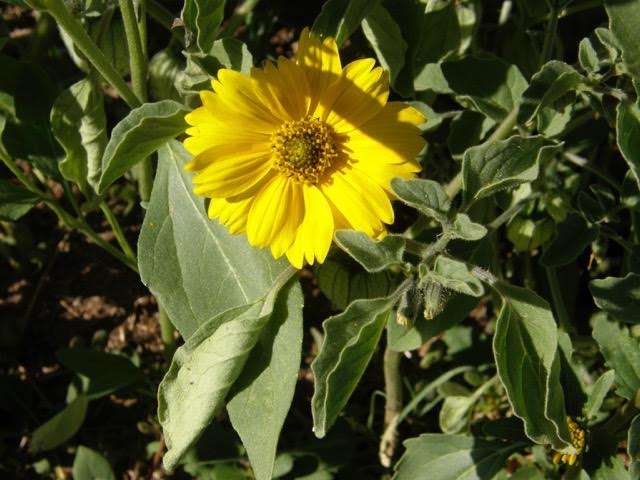The yellow flowers just keep blooming!
Another yellow daisy has been filling our disturbed spaces, sometimes with a solid mass of color. Meet the cowpen daisy (Verbesina encelioides). Notice that the species name ends in -oides, which means “looks like,” thus, this daisy “looks like encelia.”
Our flowers do look something like encelia, a bushy daisy of the Mohave Desert, but we need to look closely at their life cycles to tell them apart. Cowpen daisies need just the right timing of sun, moisture, and disturbed soil to germinate. You may even be tempted to call it a weed because it grows in the worst vacant lots and damaged grounds. However, this spectacular plant is capable of producing amazing displays of thousands of closely-packed, brilliant gold flowers (you can see a grand example at the bottom of the hill as you enter Santa Fe). Don’t be confused by the deeply lobed leaf on the right side of this photo, as it was taken in a garden and that is a tomato plant. Verbena’s leaves are fairly large with shallow indentations (lobes), separating it from the other two yellow daisies we highlighted in the last two weeks. Another distinguishing feature can be found on the tips of the large petals, called lingules: the ends of Verbena’s lingules are divided into three tips that resemble teeth, whereas Heliomerus’ are pointed and Bahia’s are dimpled.
Get out on the trails (or to an area with disturbed soil) right now to see three blooming, medium-sized, yellow daisies with golden centers.

